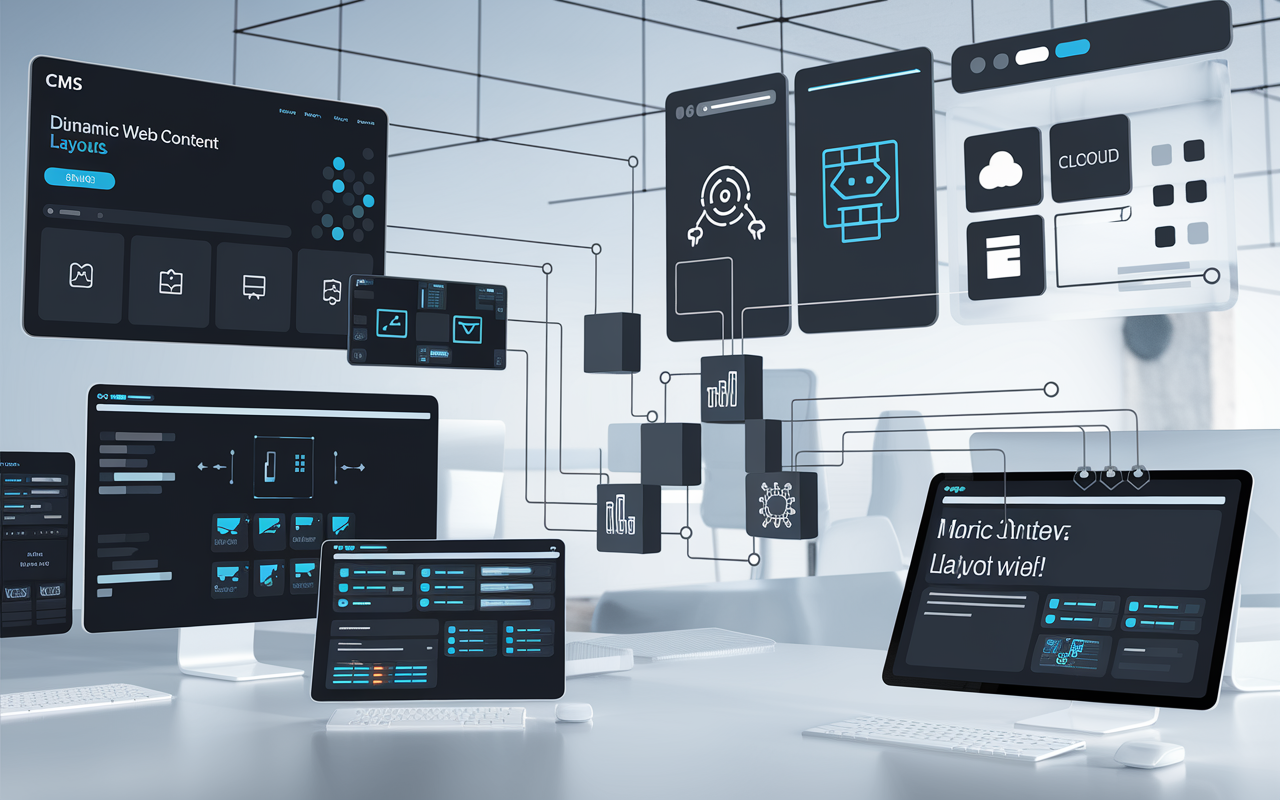By - Azaz | Published - 22 Nov 2024 | Updated - 22 Nov 2024 | Go to - Comments & Questions
Headless CMS Platforms
Top 10 Headless CMS Platforms for Modern Web Development
In today’s digital-first world, content management systems (CMS) are the backbone of websites and applications. Traditional CMS platforms often tightly couple the front-end and back-end, making them less flexible for developers who want to create highly customized, fast, and scalable web applications. Enter headless CMS, a modern solution that decouples the front-end from the back-end, offering developers unmatched flexibility while delivering content across multiple channels seamlessly.
In this blog, we’ll explore the top 10 headless CMS platforms that are shaping modern web development.

1. Strapi
Best for: Open-source enthusiasts and developers seeking flexibility.
Strapi is an open-source headless CMS that offers excellent customization capabilities. It’s built with JavaScript, supports RESTful and GraphQL APIs, and is highly extensible.
- Key Features:
- Fully customizable API
- Plugin system for added functionality
- Intuitive admin panel
- Ideal Use Case: Building modern web apps with React, Vue, or Angular.
2. Contentful
Best for: Enterprises and developers needing scalability.
Contentful is a robust, API-first platform designed for enterprises. It provides a cloud-based solution with powerful integrations and scalability options.
- Key Features:
- RESTful and GraphQL API
- Multi-environment workflows
- Content preview options
- Ideal Use Case: Delivering content to websites, apps, and IoT devices.
3. Sanity
Best for: Developers looking for real-time collaboration.
Sanity offers a unique approach to content management with real-time editing and collaborative workflows. Its flexible API ensures you can mold it to fit your exact needs.
- Key Features:
- Customizable content studio
- Real-time collaboration
- Built-in image and file handling
- Ideal Use Case: Teams managing complex content workflows.
4. Ghost
Best for: Content-focused websites like blogs and magazines.
Ghost is a headless CMS designed primarily for publishing. It offers a clean API and a user-friendly interface, perfect for writers and developers alike.
- Key Features:
- Integrated membership and subscription features
- SEO and social sharing tools
- Markdown-based content editor
- Ideal Use Case: Building blogs, magazines, or content-heavy sites.
5. Prismic
Best for: Developers prioritizing simplicity and speed.
Prismic is a user-friendly headless CMS that allows marketers and developers to collaborate effortlessly. It supports custom types and slices for flexible content modeling.
- Key Features:
- Slice Machine for content reuse
- Previews and scheduling options
- Multi-language support
- Ideal Use Case: Multi-language websites and simple web applications.
6. ButterCMS
Best for: Startups and small businesses seeking ease of use.
ButterCMS is known for its simplicity and out-of-the-box functionality. It offers a straightforward setup process, making it a great choice for small teams.
- Key Features:
- Pre-built integrations with popular frameworks
- SEO-friendly content management
- Webhooks for automation
- Ideal Use Case: Quick deployment of blogs or landing pages.
7. Hygraph (formerly GraphCMS)
Best for: Developers seeking GraphQL-first solutions.
Hygraph is a GraphQL-native CMS that excels in delivering content to multiple platforms via APIs. It’s particularly suited for omnichannel experiences.
- Key Features:
- GraphQL-powered APIs
- Multi-tenancy and role-based access
- Schema editor for precise content modeling
- Ideal Use Case: Apps requiring complex data queries.
8. Agility CMS
Best for: Enterprises managing omnichannel content.
Agility CMS provides a powerful, API-first platform for delivering content to any digital endpoint. It combines the benefits of a headless CMS with traditional CMS features.
- Key Features:
- Hybrid CMS capabilities
- Page management tools
- Integration-ready APIs
- Ideal Use Case: Enterprise-grade applications and e-commerce.
9. Netlify CMS
Best for: Jamstack developers and Git-based workflows.
Netlify CMS is a lightweight, Git-based CMS designed for developers working with Jamstack architecture. It integrates seamlessly with static site generators.
- Key Features:
- Git-backed content storage
- Markdown support
- Open-source and self-hosted
- Ideal Use Case: Static site generators like Gatsby and Hugo.
10. Directus
Best for: Teams managing complex datasets.
Directus is an open-source platform designed to manage structured content. It works with your existing SQL database, making it ideal for complex data needs.
- Key Features:
- Works with any SQL database
- Role-based access control
- Powerful API for data querying
- Ideal Use Case: Data-intensive applications and dashboards.
How to Choose the Right Headless CMS
When selecting a headless CMS, consider factors such as:
- Ease of Use: Does it offer a user-friendly interface?
- API Flexibility: Does it support RESTful or GraphQL APIs?
- Scalability: Can it grow with your application?
- Integration Capabilities: Does it work well with your existing tech stack?
Conclusion
Headless CMS platforms are transforming how we think about content management, offering unparalleled flexibility, speed, and performance. Whether you’re building a personal blog, an e-commerce store, or a large-scale enterprise app, one of these headless CMS platforms can meet your needs.
Choose the one that aligns with your project requirements, and start building amazing digital experiences!

We are a passionate team of developers and designers dedicated to helping businesses thrive in the digital age. Through cutting-edge technologies and innovative solutions, we empower you to achieve success with powerful websites, custom software, and intelligent digital products.